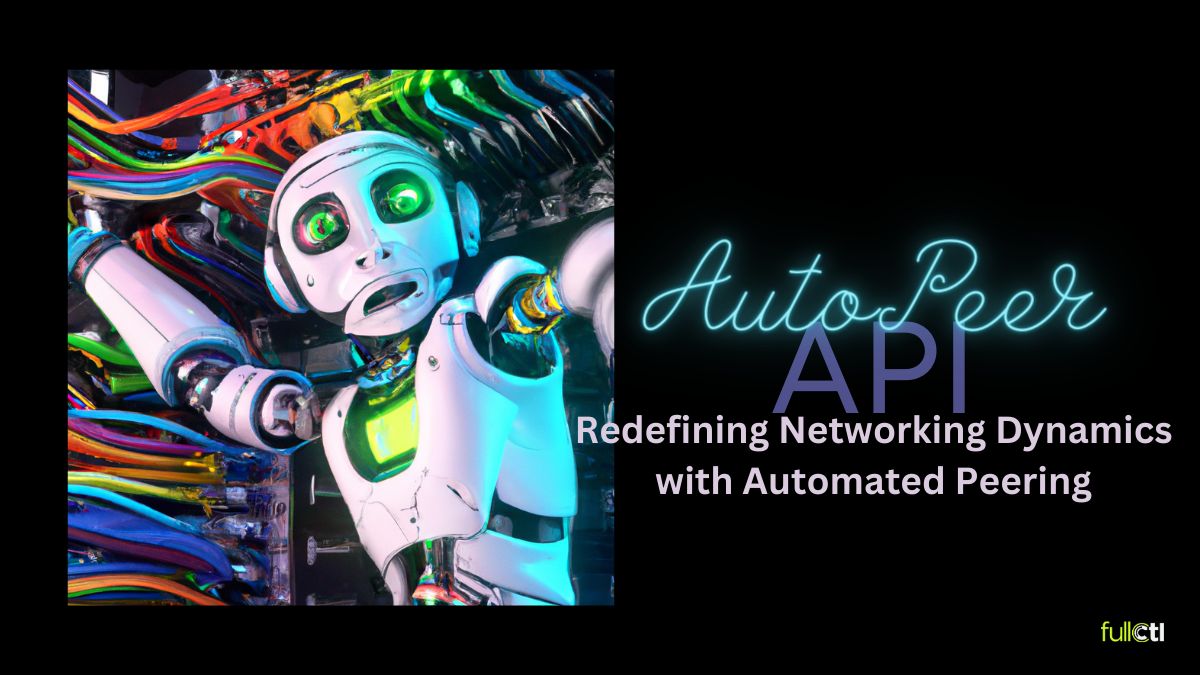
Redefining Networking Dynamics with Automated Peering
Peering, a fundamental aspect of networking, has traditionally been a manual and time-consuming process. However, the landscape is evolving, thanks to the collaborative efforts of companies like Meta, CloudFlare, AWS, Google, and the trailblazing work of FullCtl.
In this post, we’ll delve into the AutoPeer API, a groundbreaking solution that FullCtl played a pivotal role in developing, highlighting our leadership position in transforming the peering landscape.
Previous Challenges in Peering Automation
Historically, peering coordination relied heavily on email exchanges, consuming significant time and effort from individuals on both ends of the peering relationship. Recognizing the inefficiencies of this process, industry leaders, including FullCtl, sought to automate it. The first step involved creating automated peering portals, allowing users to request peering through web forms. While a step in the right direction, this method still required human intervention.
The Birth of the AutoPeer API
FullCtl, in collaboration with Meta, CloudFlare, AWS, and Google, took the initiative to address the limitations of existing peering automation. The result was the AutoPeer API, a standard API designed to manage machine-to-machine peering requests. This initiative aims not only to reduce the human time spent configuring peering but also to increase the amount of peering, reducing network latency, and ultimately improving the efficiency of global networks.
Security Measures
Recognizing the importance of security in network transactions, the AutoPeer API leverages PeeringDB OAuth services. PeeringDB, an online repository of peers and their locations, ensures that entities requesting peering are authenticated and authorized to transact on the stated network. This robust security measure provides a foundation for secure and trustworthy peering transactions.
AutoPeer API Workflow
The AutoPeer API exposes four endpoints. The authentication endpoint allows users to log in and sign up using PeeringDB OAuth. The location endpoint facilitates the initiation of peering requests, with users providing necessary details such as ASNs and IP addresses. The session request, followed by acceptance or rejection by the peer, completes the process. Successful API interactions generate a unique request ID for tracking the status of the peering request.
Future Developments and Proof of Concept
We must emphasize that the AutoPeer API is a proof of concept, deliberately omitting certain features to streamline the initial implementation. Version 1 targets Internet Exchange (IX)-only peering, leaving out Private Network Interconnects (PNI) for future versions. Security enhancements, such as RPKI signing and multifactor authentication, are also envisioned to strengthen the API’s robustness. And of course, if you automate peering, you must also automate de-peering, so that feature will likely find it’s way into future versions as well.
FullCtl’s Leadership Role
FullCtl’s active involvement in the development and client-side implementation of the AutoPeer API (in our PeerCtl software / platform) is another great example of our leadership in driving innovation within the networking industry. I strongly believe that our commitment to simplicity, security, and efficiency positions FullCtl at the forefront of the peering automation revolution.
Bottom Line
The AutoPeer API represents a significant leap forward in peering automation, streamlining a once manual and cumbersome process. FullCtl’s instrumental role in its development and the implementation of the proof of concept cements our leadership position in shaping the future of networking. As the industry continues to evolve, FullCtl’s commitment to innovation and collaboration is paving the way for a more efficient and secure global network ecosystem.
Want to try PeerCtl yourself, today, for free? Go for it, right here. We’re excited to show you what a world with simple and reliable interconnection automation looks like!